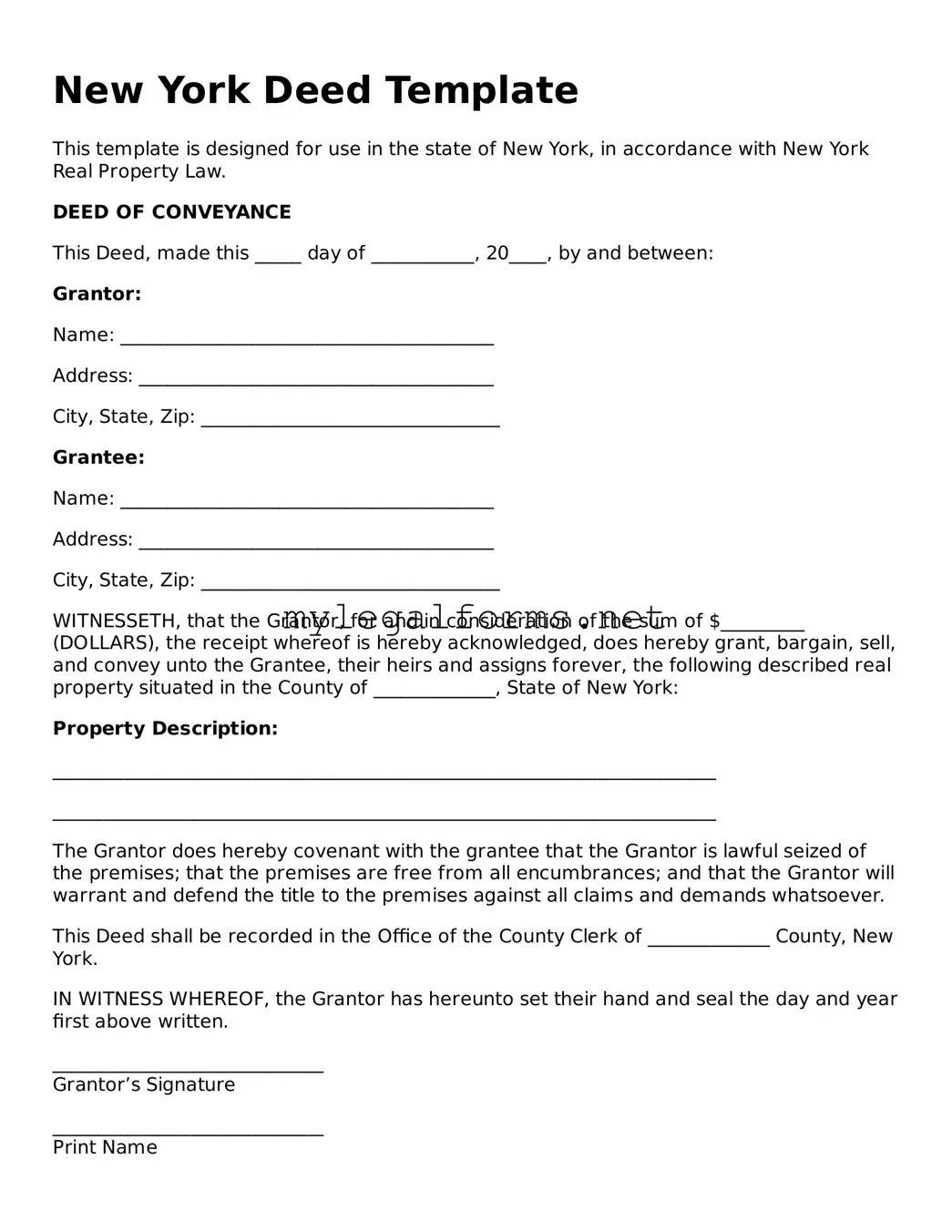New York Deed Template
This template is designed for use in the state of New York, in accordance with New York Real Property Law.
DEED OF CONVEYANCE
This Deed, made this _____ day of ___________, 20____, by and between:
Grantor:
Name: ________________________________________
Address: ______________________________________
City, State, Zip: ________________________________
Grantee:
Name: ________________________________________
Address: ______________________________________
City, State, Zip: ________________________________
WITNESSETH, that the Grantor, for and in consideration of the sum of $_________ (DOLLARS), the receipt whereof is hereby acknowledged, does hereby grant, bargain, sell, and convey unto the Grantee, their heirs and assigns forever, the following described real property situated in the County of _____________, State of New York:
Property Description:
_______________________________________________________________________
_______________________________________________________________________
The Grantor does hereby covenant with the grantee that the Grantor is lawful seized of the premises; that the premises are free from all encumbrances; and that the Grantor will warrant and defend the title to the premises against all claims and demands whatsoever.
This Deed shall be recorded in the Office of the County Clerk of _____________ County, New York.
IN WITNESS WHEREOF, the Grantor has hereunto set their hand and seal the day and year first above written.
_____________________________
Grantor’s Signature
_____________________________
Print Name
Jurisdiction: State of New York
STATE OF NEW YORK, COUNTY OF ________________
On this _____ day of ___________, 20____, before me, a Notary Public in and for said state, personally appeared _______________, known to me to be the person who executed the above instrument and acknowledged to me that they executed the same.
_____________________________
Notary Public
My Commission Expires: ________________
Note: This is a standard template and may need to be modified to suit individual circumstances. It is advisable to consult with a legal professional for personalized advice.
